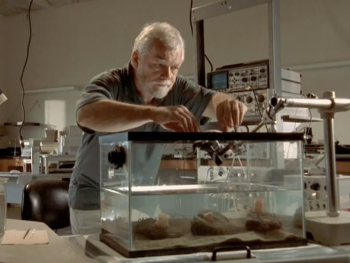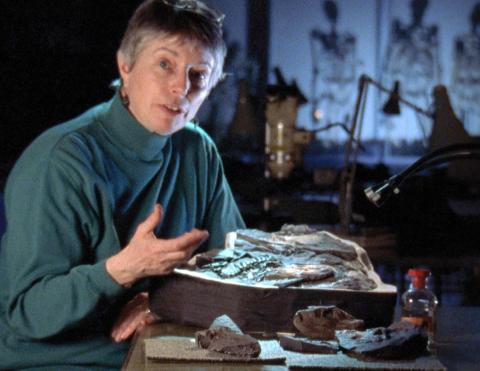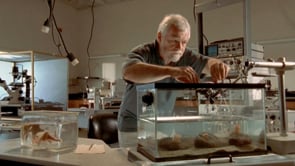
Cnidarians invented wiring, they invented cabling—that’s what nerves are. Nerves are cables that pass electricity through them. This was an amazing leap for the animal world. –Ian Lawn
Neurobiologist Ian Lawn studies how anemones move in order to shed light on the evolution of behavior. He went back to the Cnidarians to study this question, the first animal group to move. Anemones are Cnidarians, capable of complex behaviors and he wanted to understand how they controlled their behaviors at the nervous system level.
Lawn chose to study a solitary anemone, Stomphia, which is one of the few anemones that can actually swim. When stalked by a predator, Stomphia can break loose and swim away. Lawn brought Stomphia into his lab to try to understand how an animal with a simple nervous system could swim. He attached electrodes to the anemone to track when and how nerves contracted with various stimuli. After he gave the anemone a light touch and put food nearby, the anemone showed a behavioral reaction and Lawn recorded the nerves’ impulses on his computer. When he touched Stomphia with a sea star, its nerves fired rapidly and it swam away. Lawn saw from the shape of the recordings that the anemone used the same nerves—it's a simple system after all—but the nerves fired more rapidly when the animal detached from the rock and swam than when the animal was simply fed.
About Ian Lawn’s career
Ian Lawn, Ph.D. received his degree from the University of Queensland, Australia, where he became a Professor in the School of Biological Sciences.
Lawn’s research has focused on the neurophysiology of behavior in Cnidarians, including anemones and corals. He has taught Evolutionary Biology, Systems Biology and Neuroscience. Lawn’s research takes him into the field to study marine invertebrates and into his lab to study the basis of their behavior.


















